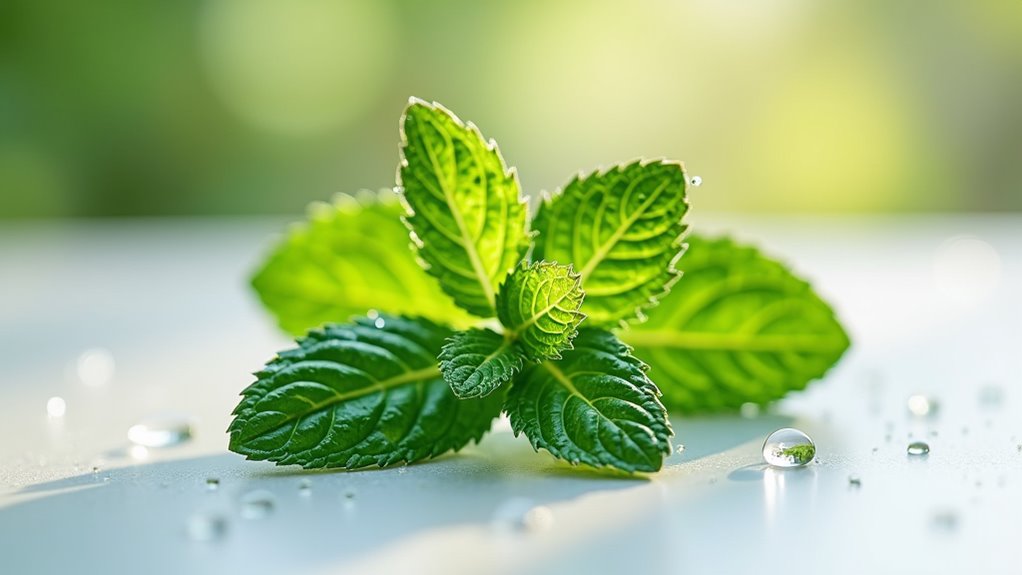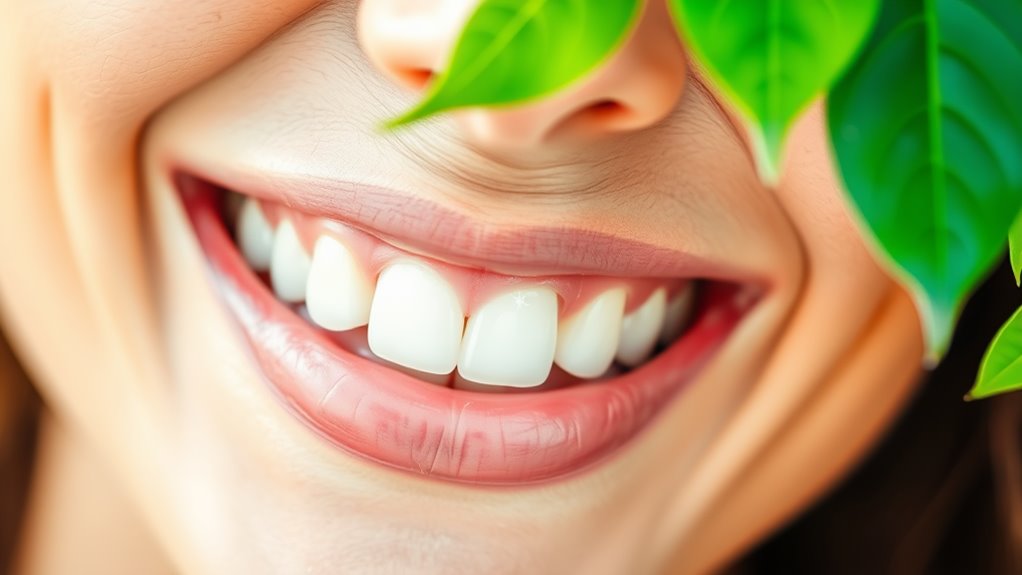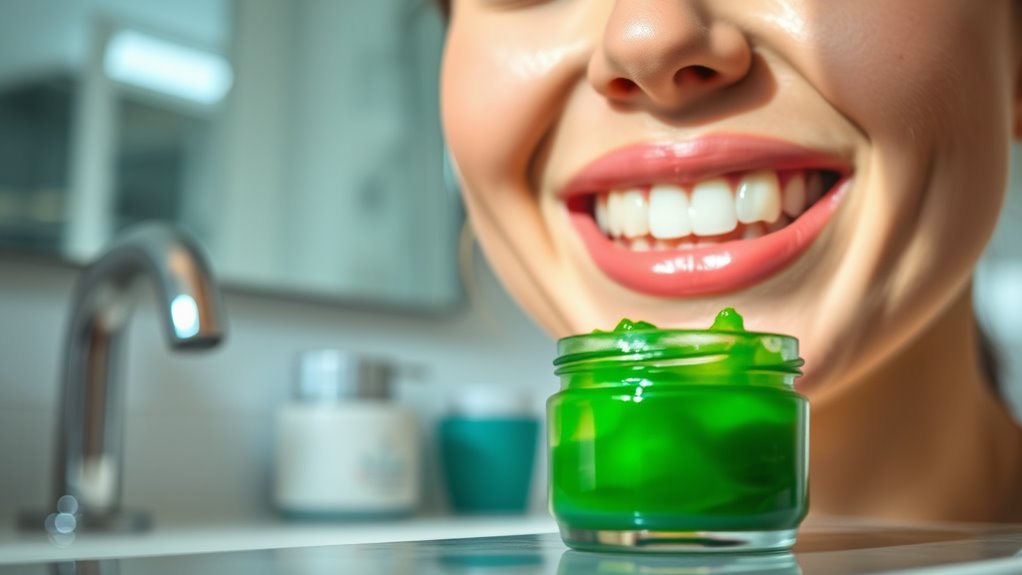The #1 Food That DESTROYS Bad Breath in Seconds!
You’ve probably experienced that moment of panic when you need fresh breath but don’t have a mint in sight. While most people reach for artificial fresheners, nature’s most powerful solution has been hiding in plain sight. Parsley, that often-overlooked garnish on your plate, packs a powerful punch against bad breath through its unique combination of compounds. Before you dismiss this humble herb, you’ll want to discover exactly how it works its magic.
Understanding Bad Breath: Common Causes and Biology
While most people experience bad breath occasionally, understanding its root causes can help you combat this common condition more effectively. Bad breath, or halitosis, primarily occurs when bacteria in your mouth break down food particles, producing volatile sulfur compounds (VSCs) that create unpleasant odors.
Several factors contribute to this process, including poor oral hygiene, dry mouth, certain medications, and specific foods. The bacteria thrive in areas between teeth, on your tongue’s surface, and in periodontal pockets.
That’s why finding the best food for bad breath isn’t just about masking odors – it’s about addressing these biological processes. Medical conditions such as sinus infections or diabetes can also contribute to persistent bad breath, highlighting the importance of understanding underlying issues.
Your mouth’s pH level also plays a crucial role. When your oral environment becomes too acidic, it creates ideal conditions for odor-causing bacteria to multiply.
Understanding this biology helps explain why certain foods can either worsen or improve breath quality by altering your mouth’s bacterial balance and pH levels.
The Science Behind Parsley’s Breath-Freshening Power
Parsley stands out among nature’s breath fresheners due to its unique chemical composition. This herb contains chlorophyll, a powerful compound that doesn’t just mask odors – it actively neutralizes the sulfur compounds causing bad breath at a molecular level.
You’ll find that parsley’s effectiveness comes from its natural antibacterial agents, including apigenin and other flavonoids. These compounds work to reduce the bacteria population in your mouth that creates volatile sulfur compounds (VSCs).
Additionally, parsley’s high concentration of polyphenols acts as a natural antimicrobial, targeting the root cause of halitosis.
When you chew fresh parsley, you’re also releasing essential oils that contain monoterpenes like myristicin. These compounds stimulate saliva production, which helps wash away food particles and bacteria.
The herb’s fibrous structure acts as a natural tooth brush, mechanically cleaning your tongue and gums while releasing its active compounds. Moreover, incorporating effective oral hygiene practices into your routine can further enhance parsley’s breath-freshening effects.
How to Use Parsley for Maximum Breath-Freshening Effects
To maximize parsley’s breath-freshening benefits, you’ll want to consume it raw and fresh rather than dried or cooked. Simply chew on a sprig of fresh parsley for 30 seconds, making sure to release the natural oils before swallowing. You can also finely chop the leaves and sprinkle them directly on your food.
For a powerful breath-freshening boost, try this innovative parsley hack: Blend a handful of fresh parsley with a squeeze of lemon juice and a splash of water to create a natural mouth rinse. Swish it around for 30 seconds before spitting it out.
Keep fresh parsley readily available by storing stems in a glass of water in your refrigerator, just like a bouquet. Regular hydration helps to combat bad breath by flushing out bacteria, so be sure to drink plenty of water throughout the day.
For on-the-go freshness, pack a few sprigs in a small container or zip-lock bag. You can even grow your own parsley indoors for an endless supply of this natural breath freshener.
Top Foods That Work Alongside Parsley to Combat Bad Breath
Although parsley packs a powerful punch against bad breath, several other foods can enhance its effectiveness when eaten together. By strategically combining breath-freshening foods, you’ll create a natural defense system against odor-causing bacteria.
Green tea serves as a perfect companion to parsley, as its polyphenols neutralize sulfur compounds while providing antimicrobial benefits. You’ll find that crunchy foods like apples and carrots work synergistically with parsley by increasing saliva production and mechanically cleaning your teeth.
For optimal breath-freshening results, try this power combo:
- Mix chopped parsley with yogurt to combine probiotics with chlorophyll.
- Add thin apple slices and a sprinkle of fennel seeds for enhanced cleaning action.
- Finish with a cup of green tea to lock in freshness and kill harmful bacteria.
Incorporating saliva production into your routine is crucial, as it helps wash away food particles and bacteria that contribute to bad breath.
These food pairings don’t just mask bad breath – they actively work to eliminate its root causes while supporting your overall oral health.
Daily Habits and Natural Remedies for Long-Lasting Fresh Breath
Start your day by scraping your tongue, which removes up to 80% of oral bacteria. Follow with oil pulling using coconut oil for 15-20 minutes before brushing your teeth.
Throughout the day, stay hydrated by drinking water infused with mint leaves or cucumber slices. Keep a small spray bottle filled with diluted peppermint essential oil for quick breath refreshment. Chew on fennel seeds or cardamom pods after meals – they’re natural antibacterial agents.
Before bed, try a saltwater rinse to neutralize harmful bacteria and balance your mouth’s pH levels. You can also create a natural mouthwash by mixing apple cider vinegar with water. A complete oral care strategy includes flossing and using mouthwash to further enhance your breath freshness.
These simple yet effective practices, when combined with mindful eating, will help you maintain consistently fresh breath around the clock.




